Technical debt is often viewed through a narrow lens, primarily as a cost that accumulates over time. However, I believe it’s crucial to shift our perspective and recognise it as a missed opportunity. Every moment we allow technical debt to linger, we’re essentially leaving money on the table. This isn’t just about the financial implications; it’s about the potential innovations and improvements we forgo because we haven’t addressed those underlying issues.
The Real Cost of Technical Debt
When I reflect on my experiences in various teams, I see a common theme: the struggle to maintain a high-quality, usable product. This struggle often stems from the accumulation of technical debt, which can manifest in several ways:
- Increased Maintenance Costs: The more technical debt we accumulate, the more time and resources we spend on maintenance rather than innovation.
- Slower Delivery: Teams bogged down by technical debt find it challenging to deliver new features or improvements quickly, which can frustrate stakeholders and customers alike.
- Reduced Morale: Developers often feel demotivated when they’re constantly battling against a backlog of technical debt, leading to burnout and turnover.
Embracing a High-Quality Product Mindset
So, how do we combat this? The answer lies in fostering a culture that prioritises the delivery of a high-quality, usable product on a regular cadence. This approach is not merely a best practice; it’s a superpower for our teams and organisations. Here’s why:
- Enhanced Agility: When we focus on maintaining a high-quality product, we can pivot and adapt more easily to changing market demands. This agility allows us to seize opportunities that might otherwise slip through our fingers.
- Increased Value Delivery : Regularly delivering a usable product means we can gather feedback more frequently, allowing us to refine our offerings and better meet customer needs.
- Empowered Teams: Teams that are encouraged to address technical debt feel a greater sense of ownership over their work. This empowerment leads to increased innovation and a more engaged workforce.
Strategies for Managing Technical Debt
To effectively manage technical debt, we need to adopt a proactive approach. Here are some strategies that I’ve found beneficial:
Regularly Review and Prioritise: Make it a habit to review your technical debt regularly. Prioritise it alongside new features and enhancements to ensure it doesn’t get sidelined.
Incorporate Refactoring into Sprints: Allocate time in each sprint for refactoring and addressing technical debt. This ensures that it remains a part of your workflow rather than an afterthought.
Foster Open Communication: Encourage team members to voice concerns about technical debt. Open discussions can lead to innovative solutions and a shared understanding of its impact.
Educate Stakeholders: Help stakeholders understand the implications of technical debt. When they see it as a barrier to value delivery, they’re more likely to support initiatives aimed at reducing it.
Conclusion
In conclusion, technical debt is not merely a cost to be managed; it’s a significant opportunity that we must seize. By prioritising the delivery of a high-quality, usable product, we empower our teams to innovate and adapt, ultimately leading to greater value for our organisations. Let’s not leave money on the table; instead, let’s tackle our technical debt head-on and unlock the potential that lies within our teams.






























